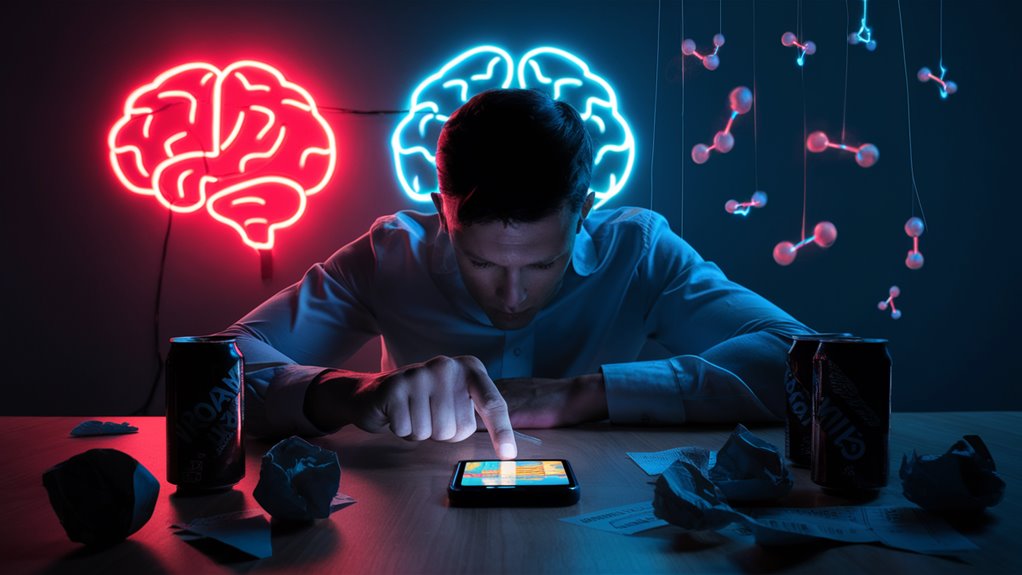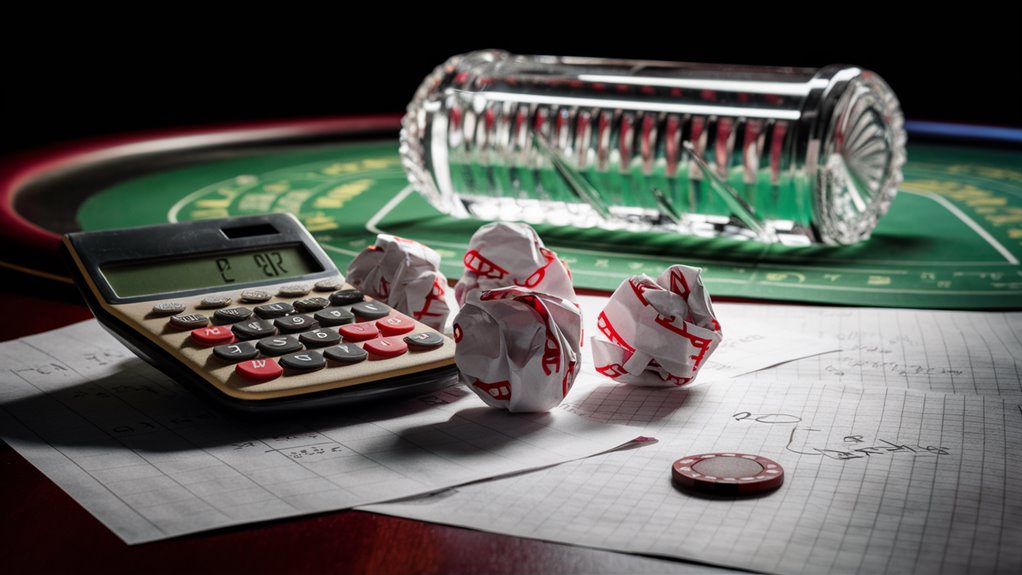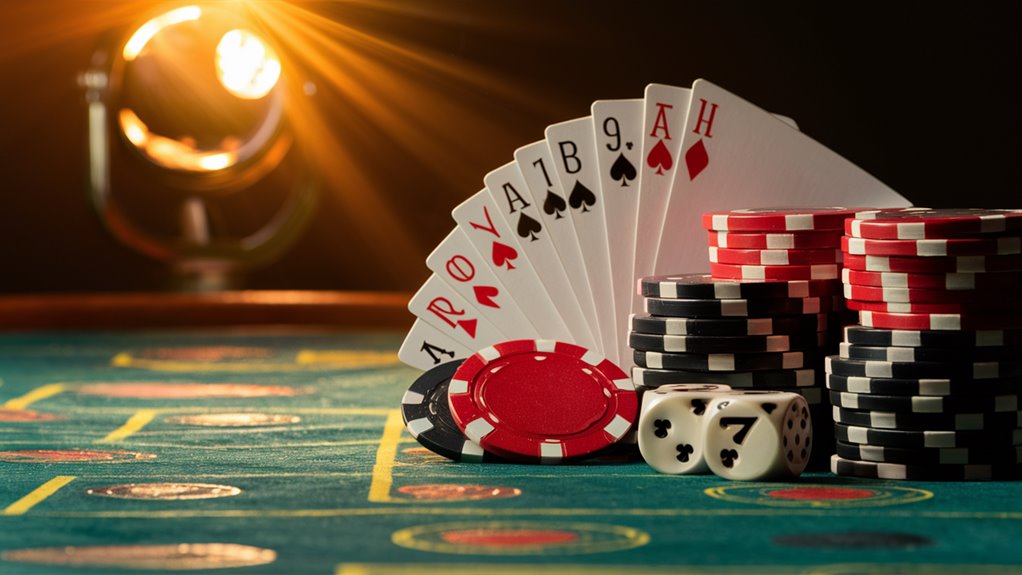Neuronal Mechanism of Pathological Gambling
Dopamine release is at the bottom of worsening gambling addiction. When people participate in wagering activities, their brains perpetually flush with this pleasure chemical which results in thrilling feelings and great satisfaction. It is important to note that these neural responses can occur not just when one wins but is also happening while on the cusp of victory, so as to deceive all else about oneself into believing there will be a payoff worth pursuing for further investment.
Changes in Brain Structure and Decision Making
Long-term exposure to gambling fundamentally restructures the architecture of the brain, with particular effect on regions responsible for impulse control and decision making. The prefrontal cortex, which is responsible for rational thought, increasingly deteriorates as addiction deepens. These changes in structure are reminiscent of the patterns seen with substance abuse disorders. Therefore it’s clear to see gambling has a profound neurological effect.
Technology’s Role in Exacerbating the Problem
In modern digital gambling, addiction trends can be amplified via:
Mobile devices make 24/7 gambling possible.
Sophisticated algorithms govern user interaction.
A combination of both these tactics, customized for each person.
Entirely tactile all of the senses are rewarded by gambling: touch, sight, hearing, and smell.
Breaking the Cycle: Treatment Options
Comprehensive interventional strategies must address both the biological and cognitive aspects of pathological gambling. Evidence-based therapies typically include:
Cognitive behavior therapy
The regulation of neurotransmitters in the brain
Addressing triggers in one’s environment
Involvement with support systems
These interventions are aimed at the intricate network of dysfunction and coping strategies, which offer the most definitive way back to a healthy life.
Gambling in the Brain
The Brain on Slots: Understanding Pathological Gambling
Dopamine and the Brain’s Reward System
Neuroscience on gambling presents an unparalleled demonstration of how the brain uses its reward system in response to both wins and near misses. In a gambling turn-card scenario, the human brain secretes drop after drop – no pun intended – of dopamine, that most important neurotransmitter, creating a biochemical atmosphere very similar to the use of cocaine or amphetamines. This dopamine release not only occurs during winning times but of much greater significance is happening as people anticipate future gains and their probabilities.
Near Miss Experiences in Gambling
Near-miss experiences in gambling evoke strong brain responses. Research shows that the brain’s reward circuitry activates as strongly with near-misses as with actual wins. This neurobiological mechanism reinforces gambling activities with a paradoxical pleasurable response to losing results, indirectly encouraging continued gambling despite negative financial consequences.
Neurological Changes and Addiction Cycle
Chronic gambling can bring about structural changes in the brain, particularly the prefrontal cortex, which governs executive function and impulse control. This neurological adaptation sets up a cycle in which weakened impulse control is coupled with heightened tolerance, requiring gambles of ever-increasing intensity for dopamine release equivalent to what was achieved before.
Modifications in Brain Structure
Key Neural Mechanisms:
- Dopamine releasing patterns
- Reward circuit activation
- Prefrontal cortex modification
- Tolerance development
- Impulse control disruption
Brain Chemistry and Reward Pathways
The brain’s reward pathways represent complex networks that regulate pleasure, motivation, and the process of learning. When people gamble, dopamine neurotransmitters are released as they place bets or win – this even happens during a near-miss experience. This neurochemical effect is strongly reminiscent of the pattern of substance addiction, laying down powerful links between gambling activity and the experience of reward.
Neural Pathways and Addiction Mechanisms
The nucleus accumbens, which forms an essential part in the mesocorticolimbic pathway, is extra sensitive to gambling-relevant stimuli. This increased sensitivity generates stronger cravings and a corresponding reduction in control over gambling activities. In problem gamblers, the prefrontal cortex shows reduced effectiveness in decision-making and impulse control, while the amygdala is much more active in emotional processing than it should be.
Reward Processing and Behavioral Outcomes
The brain’s inability to distinguish between actual and anticipated rewards creates a powerful psychological mechanism. Anticipation of victory alone triggers the release of dopamine, and in turn, the gambling cycle continues to escalate despite mounting losses. Given this neurochemical process, the brain’s reward system is turned upside down. Now it highlights immediate gain rather than long-term consequences. Gambling activates the same reward pathways seen in addictive behavior. Here they repeat themselves as elements of persistent behavior.
Key Neural Components of Gambling Addiction:
- The dopamine system
- Nucleus accumbens
- Frontal lobe and prefrontal cortex
- Amygdala
- Mesocorticolimbic pathways
Technology and Addictive Behavior

The Impact of Technology on Addictive Behavior
Platforms for digital modern gambling evolutions: Over time, advanced technology has changed both gambling access and addictive behavior patterns as gambling addiction becomes more sophisticated. Mobile devices make it possible for players to access gambling ’round-the-clock. There are no constraints in terms of time or location that restrain votes and elections anymore. Modern online casinos rely on artificial intelligence (AI) programming of complex algorithms to adjust and adapt user experience personally for every player in order of increasing loyalty.
Psychological Mechanisms and Digital Reinforcement
Modern gambling platforms are created by principles of behavioral psychology operating on a system in which rewards are dispensed intermittently, just like the tactics The Most Popular Online Casino Payment Options used for keeping people active on social media. In this way, the mechanism triggers dopamine responses and gives strength to addictive behavioral patterns. Virtual currencies, loot boxes, tackle boxes, and micro-transactions have created a complex world where gaming and gambling are hard to tell apart.
Data Analytics and Vulnerability Exploitation
Digital tracking systems use advanced user behavior analysis to identify those who are susceptible to addiction. This aids in optimizing the engagement of users with online businesses. Targeted notifications, personalized offers, and games make it hard to stop engaging. Enhanced by the addition of high-definition graphics and sound, along with experiences that intensify the psychological impact, these platforms heighten the addiction to them. Cryptocurrency gambling and virtual reality casinos represent new frontiers in gaming technology where such high levels of digital transference pose unprecedented levels of addiction risk.
Advanced Engagement Tactics in Gambling
- Real-time behavioral tracking
- Personalized services by AI
- Unified approach
- Multifunction method of interfacing
- Social integration enhancements
- Mode inversion of Virtual Reality
The combination of these technological factors produces progressively more attractive and possibly addictive forms of gambling. We should carefully examine their psychological and social effects.
High-Risk Groups & Indications
High-Risk Seekers and Warning Signs of Gambling Addiction
Researchers are finding more and more commonality between those with problem gambling and having gambled as children. Acquiring a taste for this destructive activity in childhood will soon turn it into a habit for adulthood.
Gambling is something that most adults do not think about unless they have an income. “We just fail,” “penniless,” and “money matters” are the three sentences we hear from gamblers often.
Major Implications
Gambling behavior is a typical problem which can manifest with recognizable characteristics, such as:
- Making secret bets or staking yourself heavily on an event you know nothing about
- Surfing the internet for two weeks looking for fixed odds bookies that are out of bets to no good reason
- The more you gamble, the more money you spend
- Permanent cyclothymia after gambling. Increased bellicosity becomes the player as his convictions are defeated over and again by others with better luck
Finance Signal
Despite these signs for gambling addiction, gambling remains popular and socially acceptable.
- Amassing gambling debts for gambling
- Selling assets to gamble
- Constantly raising the stakes on my bets in order to win back losses
- Steadfastly borrowing for gambling games
- Draining bank accounts for gameplay
Admitting that they have multiple risk factors and warning signs signifies a further increased likelihood of gambling disorder. Early pattern recognition of these signs enables treatment and even intervention within ample time. One is urged to contact professional help if one is displaying any of these signals. Treatments can help people to regain control over their lives.
Treatment Methods and Recovery
Treatment Methods and Recovery from Gambling Addiction
Evidently effective treatment methods:
Cognitive-behavioral therapies (CBT) are still the gold standard in treatment for gambling disorder. This approach allows the patient to identify and transform thought patterns and behaviors that are problematic.
In combination with CBT techniques, motivational interviewing skills provide powerful tools for developing events as well as essentials of avoiding conflict.
Therapeutic and medical assistance:
Using Selective Serotonin Reuptake Inhibitors (SSRI) or mood stabilizers to treat concomitant mental illness is classic management behavior. Despite greater challenges in dual diagnosis treatment, those who suffer from gambling addiction and this co-occurring problem show better recovery rates than similar disorders when treated separately.
Support networks composed of group therapy and individual counseling sessions are critical to rehabilitation program success. Banking restrictions and monitoring of accounts provide additional guarantees for those in the early stages of recovering from gambling debts.
Safeguards: Banking restrictions and account monitoring provide extra safeguards in the early stages of recovery from gambling debts.
Public Health Initiatives for Preventing Pathological Gambling
Evidence-based education and awareness courses serve as the bedrock for public prevention. It has been shown in some areas that this combination could help curb harm and lessen society’s addiction to gambling.
Integrated Prevention Framework
This combination creates a multi-level set of shields including regulations, systems, and public health practices. By taking this kind of approach, all sorts of possible gambling capabilities are considered, and preventive education, authority for supervision, and intervention methods can all be used.
By utilizing research-based methodologies and continuing to monitor results, harm reduction efforts can proceed effectively into the future.




